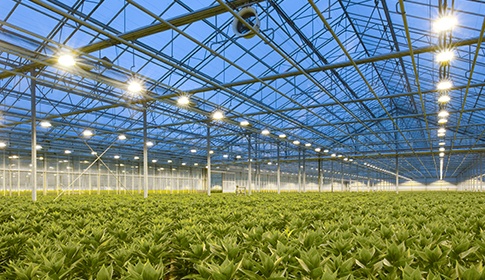When you begin looking to purchase grow or horticultural lights for your growing operation (whether it is for aquaponics, hydroponics, CBD / CBG harvesting, hemp, or another application), there are a few terms you will commonly hear. These terms are PPF, PPFD, and PAR Efficacy.
The following is a guide to help you understand what these three terms mean and why they are important when choosing the best lighting solutions for your operation.

PPF
PPF is the abbreviation for “photosynthetic photon flux“. It is the rate of photons between the wavelength range 400nm to 700nm that a light emits. (“nm” stands for nanometers.) Photons between the range of 400nm to 700nm are also commonly known as PAR (photosynthetic active radiation).
The photons within the PAR wavelengths contribute to photosynthesis. The measurable unit of the PPF value is µmol/s (micromoles per second). Knowing the PPF value of a light source allows easy comparison of the total light output, which can, in theory, contribute to photosynthesis. It is important to remember that a PPF value, however, is not the amount of these photons that are actually reaching your plant, but a measurement of the light emitted.
PPFD
PPFD is the abbreviation for “photosynthetic photon flux density”. PPFD is the quantity of PAR photons that actually reach your plant to contribute to photosynthesis.
PAR Efficacy
It is important to pay attention to the PAR efficacy of lighting when comparing your options when purchasing lighting. PAR Efficacy is the amount of PAR photons your light is creating, given the amount of energy you are putting into the light. As technology develops within LED lighting, PAR Efficacy can be greatly increased compared to traditional ceramic metal halide or fluorescent lighting. In grow lighting, this is calculated in umol/J (the number of micromoles the fixture produces per joule).
For comparison:
1.5 umol/J is considered efficient. Anything above 2.0 umol/J is considered very efficient. For comparison:
- Many high-pressure sodium (HPS) fixtures on the market have an efficiency of 1.3 umol/J or less.
- Some of the best high-pressure sodium (HPS) grow lights approach 1.7 umol/J.
- The best ceramic metal halide grow lights have an efficiency of just under 2.0 umol/J.
- LED grow lighting can go up to 2.5 umol/J.
